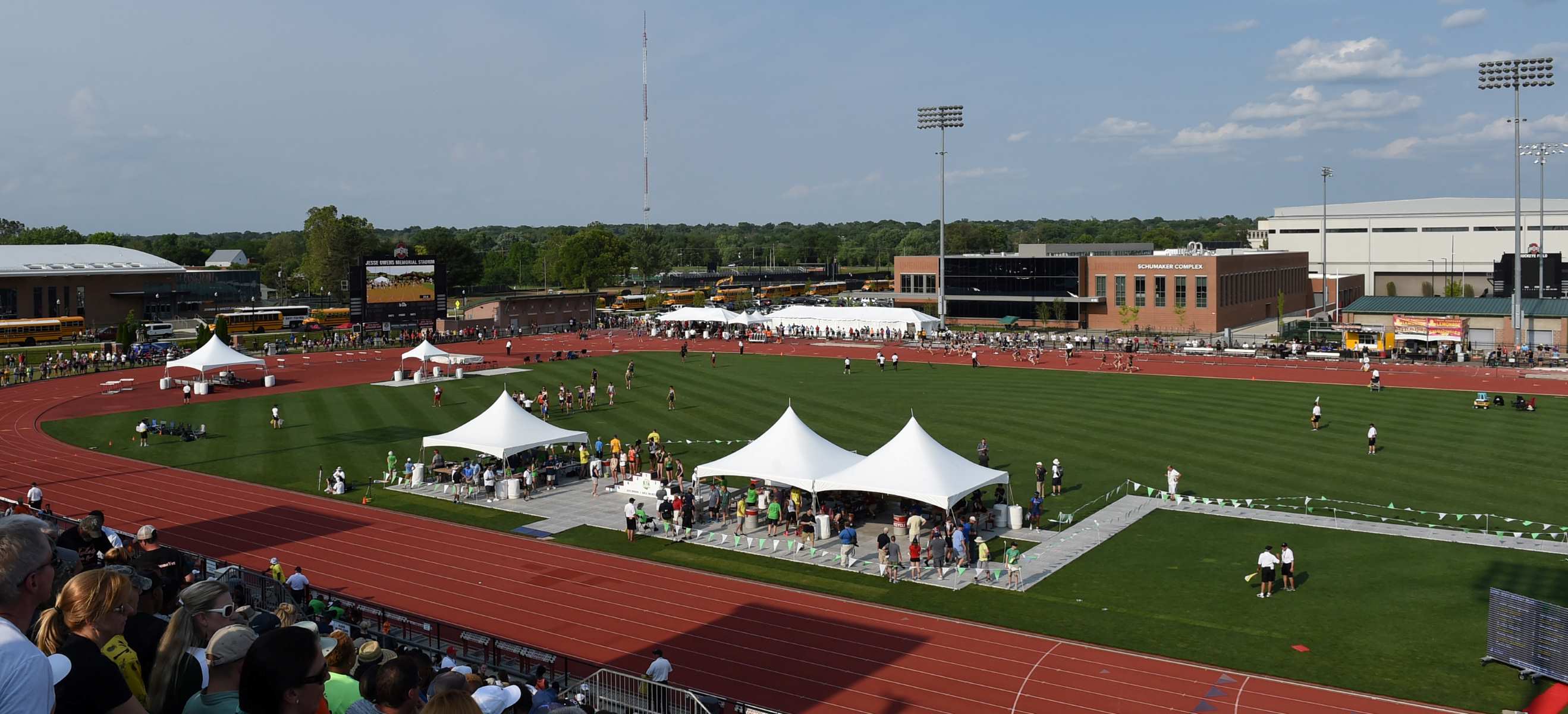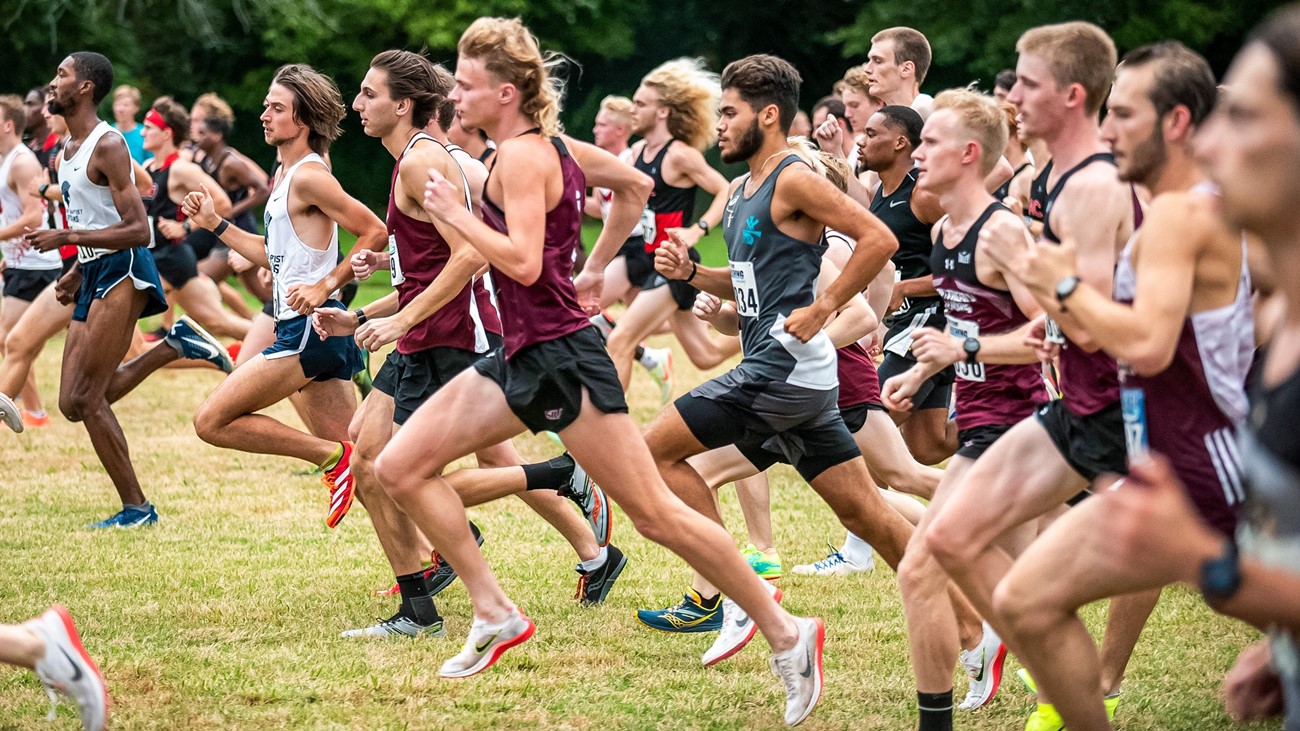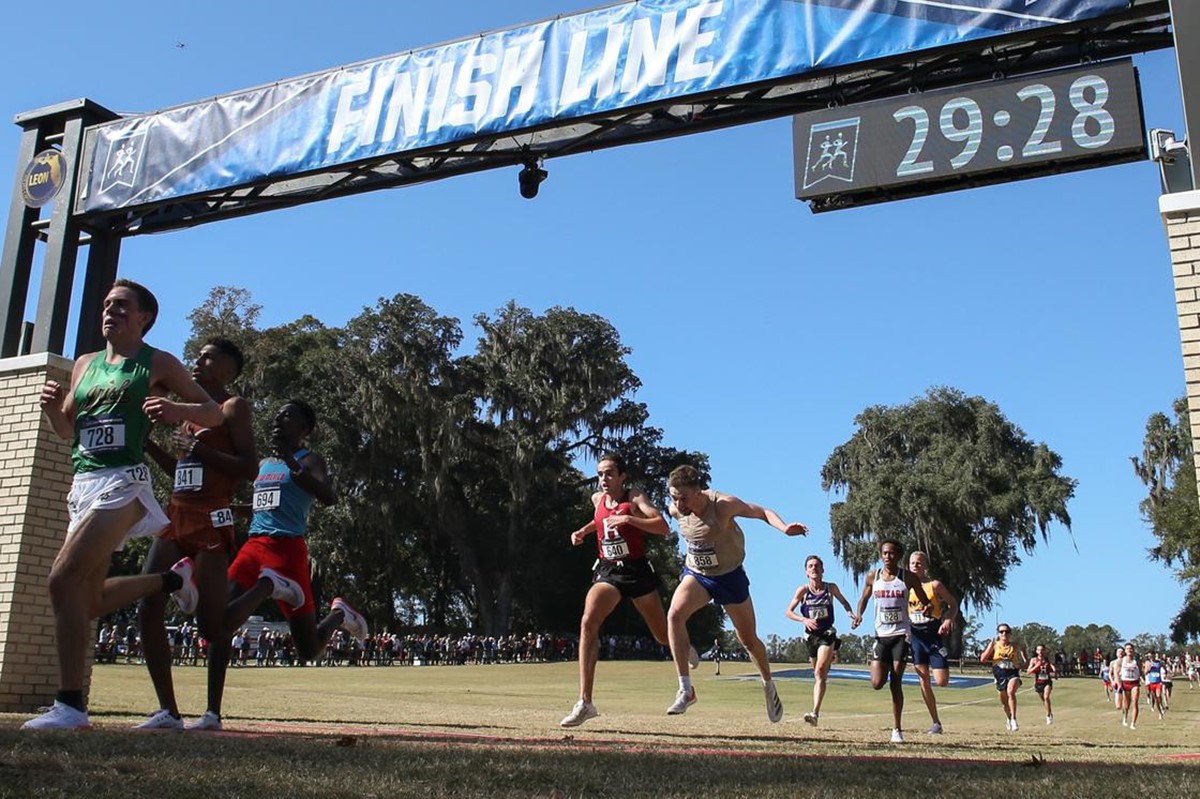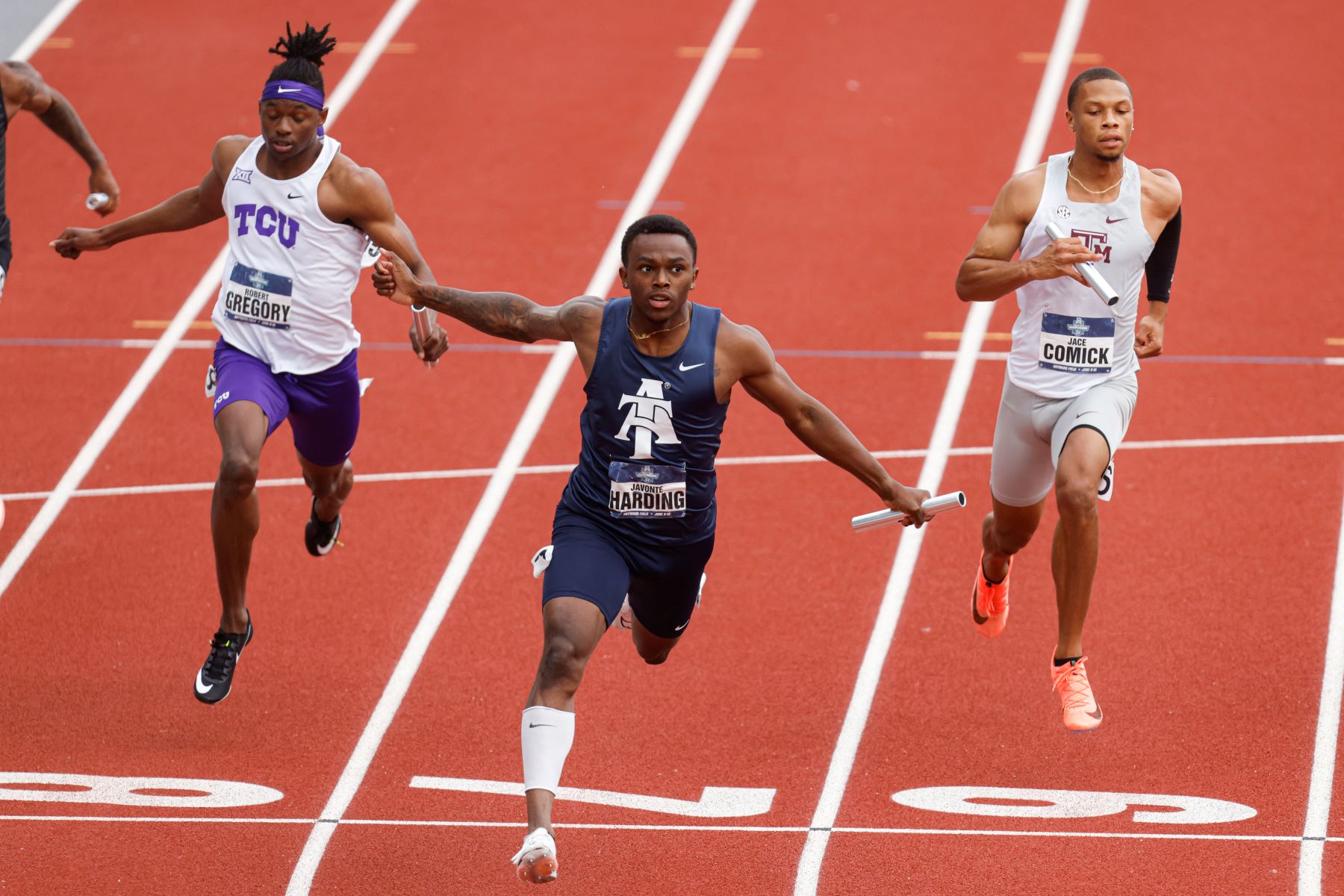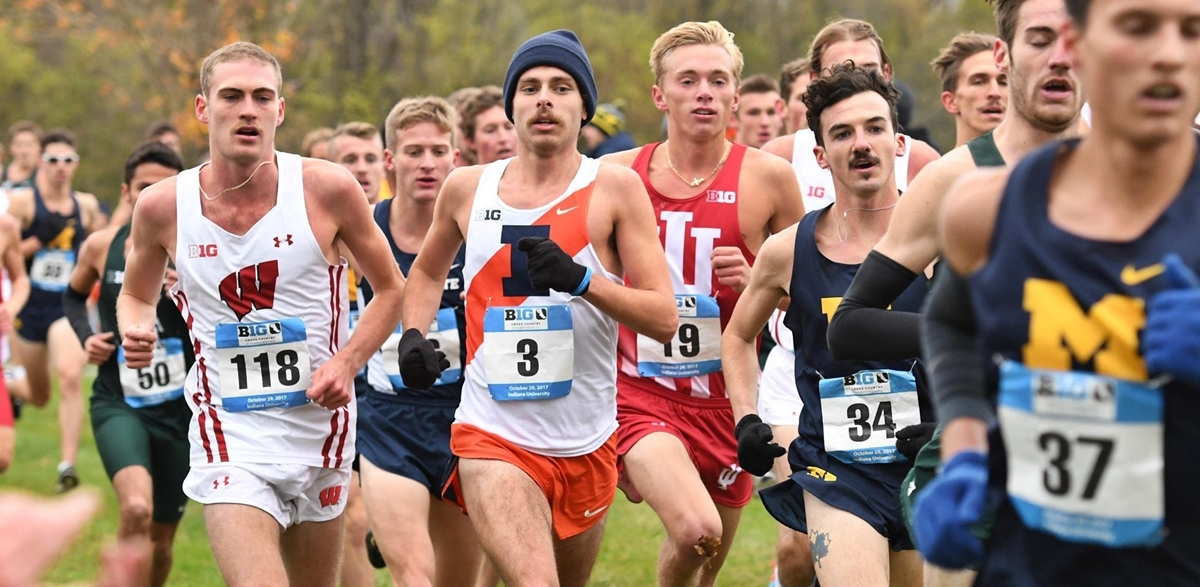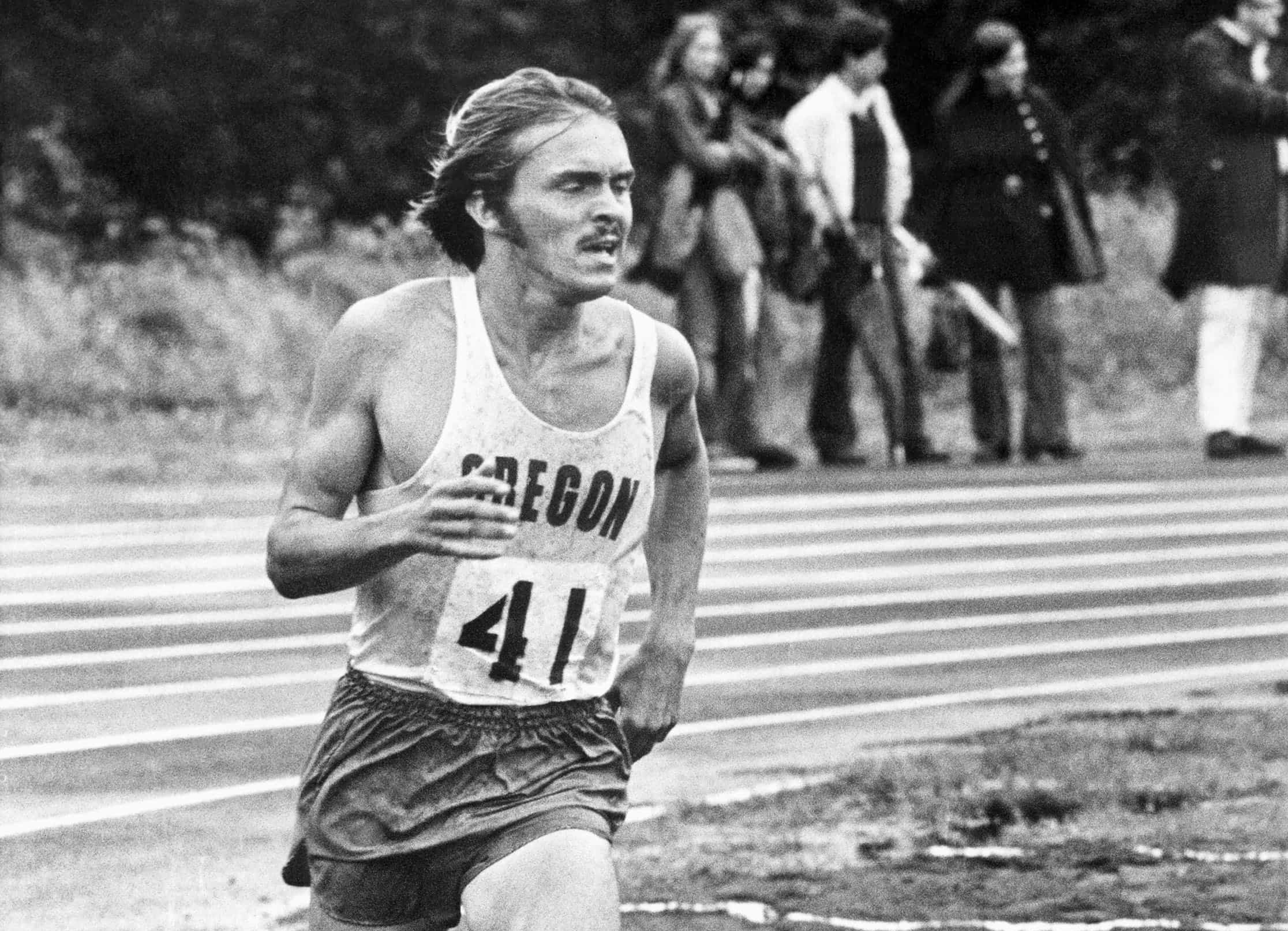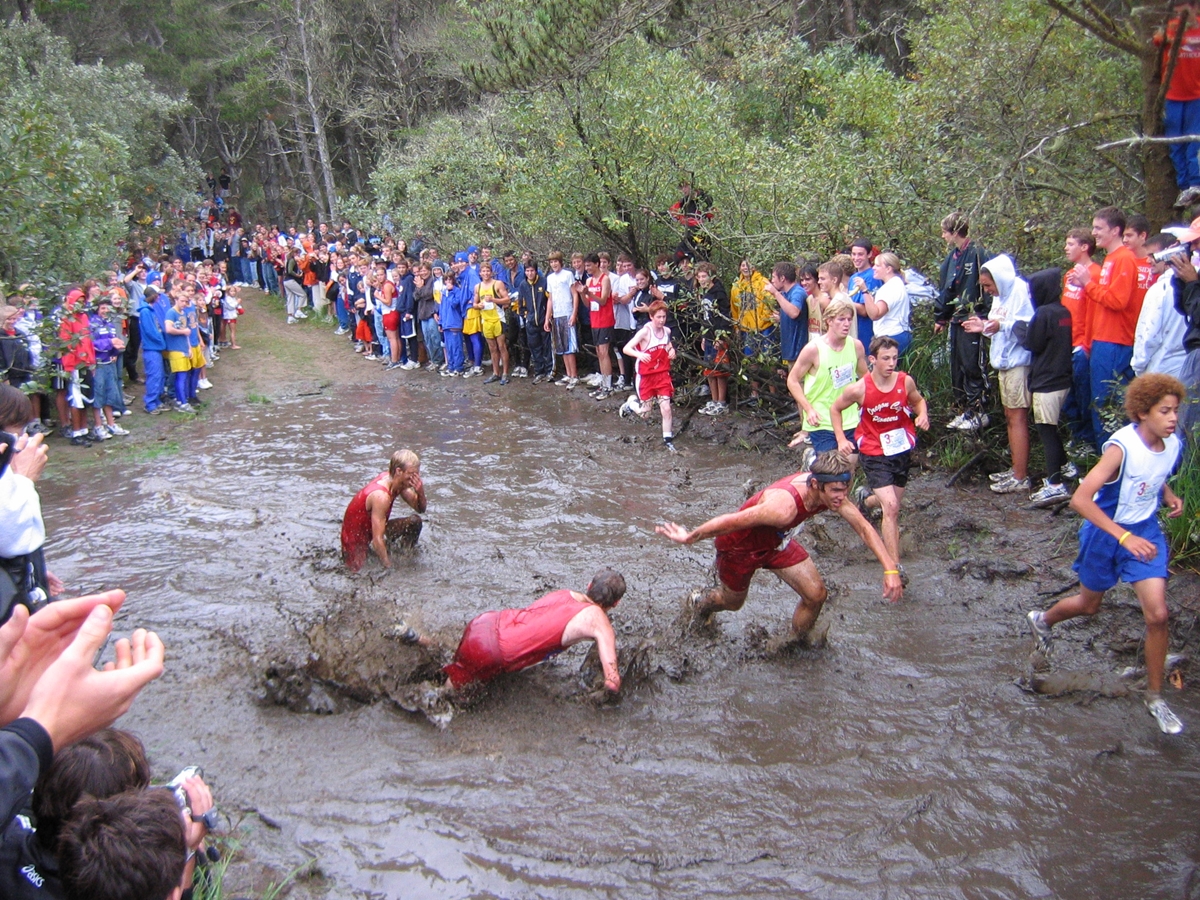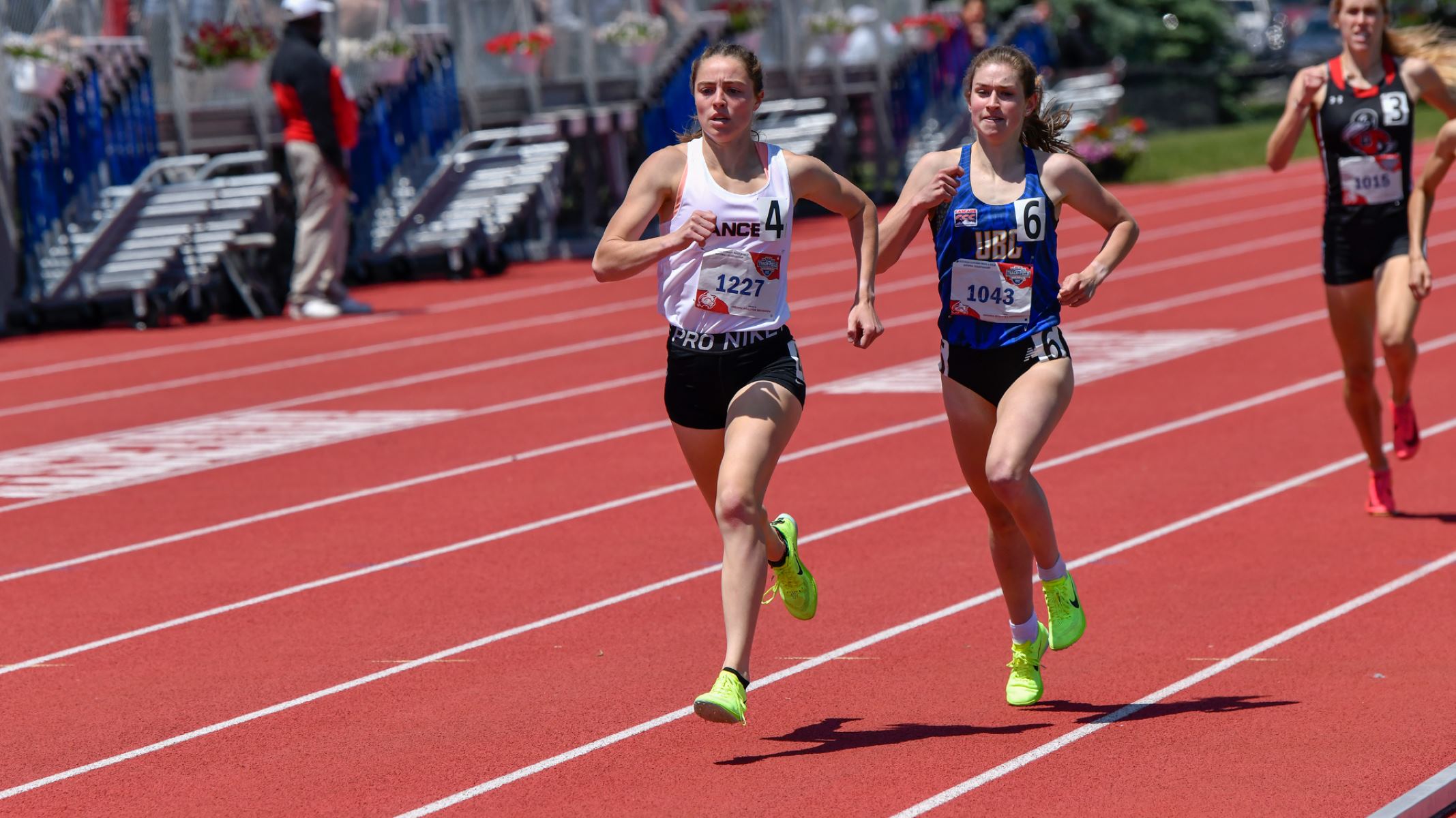Home>Misc>Featured>What School Has Won The Most NCAA Championships In Track And Field
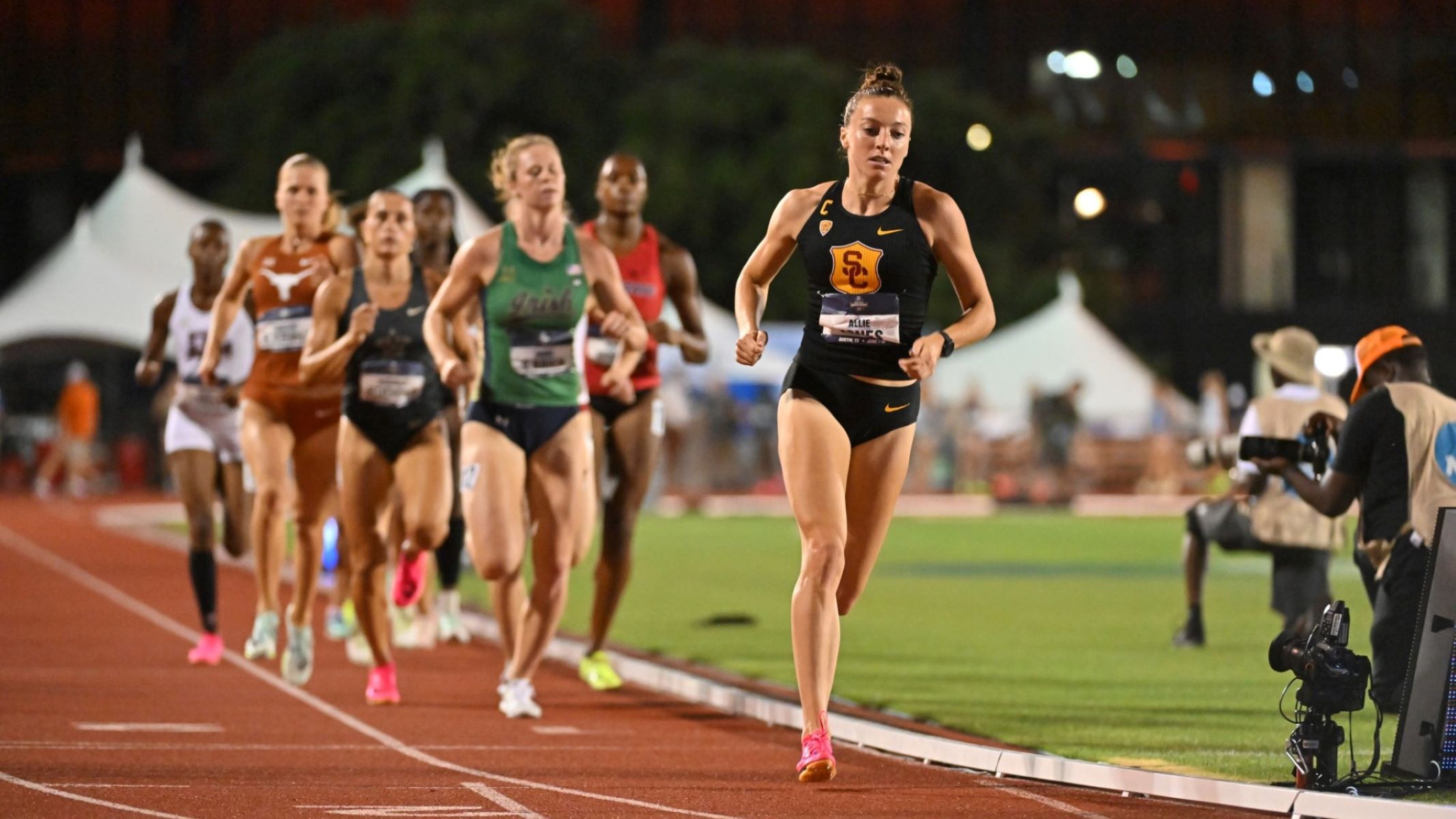

Featured
What School Has Won The Most NCAA Championships In Track And Field
Modified: January 2, 2024
Discover the school that has achieved unrivaled success in NCAA Track and Field Championships. Read about the team's stunning record and dominance in the sport.
Introduction
Track and field is a sport that combines speed, strength, and precision. Athletes compete in various events, including sprints, distance running, hurdles, jumps, and throws, showcasing their athletic prowess and determination. The National Collegiate Athletic Association (NCAA) organizes and hosts the annual NCAA Track and Field Championships, where the nation’s top collegiate athletes gather to compete for individual and team honors.
The NCAA Track and Field Championships have a rich history dating back several decades. These championships not only highlight the exceptional talent and dedication of student-athletes but also showcase the success and prestige of their respective universities. With numerous track and field programs across the country, there is intense competition to secure the most championships. Universities strive to develop strong track and field programs, recruiting top athletes and providing them with the necessary resources and coaching to excel.
Winning NCAA championships in track and field is not only a testament to the skill and hard work of the athletes but also reflects the overall excellence and commitment of the universities’ athletic departments. The universities that have achieved the most success in NCAA track and field championships have set themselves apart as powerhouses in the sport, leaving a lasting legacy and inspiring future generations of athletes.
Throughout this article, we will delve into the history of NCAA track and field championships, explore the major events that make up the championship meet, identify the universities with the most championships, analyze the factors that contribute to their success, and highlight some notable schools that have left their mark on NCAA track and field championship history. By the end, you will have a comprehensive understanding of the sport’s prominence and the universities that have risen to the top.
History of NCAA Track and Field Championships
The NCAA Track and Field Championships have a long and storied history that dates back to the early 20th century. The first official championship meet was held in 1921, making it one of the oldest collegiate sports championships in the United States.
Originally, the championship meet consisted of only a few events, such as the 100-yard dash, high jump, and shot put. Over the years, the number of events grew, and the meet expanded to include a wider range of track and field disciplines.
In the early years, track and field athletes from various universities competed against each other in an open meet format. However, in 1933, the NCAA officially authorized and recognized the meet as the NCAA Track and Field Championships, setting the stage for a more organized and competitive event.
Since its establishment, the NCAA Track and Field Championships have taken place annually, providing student-athletes with the opportunity to showcase their skills and represent their universities on a national stage. The championships have served as a breeding ground for some of the most iconic and influential athletes in the sport, propelling their careers to higher levels.
Over the years, the NCAA has played a crucial role in shaping the championship meet, implementing rule changes, and introducing new events to align with the evolution of the sport. The organization has worked tirelessly to ensure fair competition, maintain the integrity of the championships, and provide a memorable experience for athletes, coaches, and fans.
The NCAA Track and Field Championships continue to draw large crowds and capture the attention of track and field enthusiasts. The meet attracts top talent from universities across the country, creating fierce and thrilling competition. Records are broken, personal bests are achieved, and new stars emerge at each championship meet, adding to the rich tapestry of the event’s history.
As the NCAA Track and Field Championships enter a new era, the sport continues to grow, attracting talented athletes from around the world. The championships serve as a platform for these athletes to showcase their skills, gain exposure, and pursue their dreams of competing at the highest level.
In the next section, we will delve into the major events that make up the NCAA Track and Field Championships, providing insight into the breadth and diversity of the competition.
Major NCAA Championship Events
The NCAA Track and Field Championships feature a wide array of events that test athletes’ speed, endurance, agility, and strength. These events are divided into several categories, including sprints, distance running, hurdles, jumps, and throws, ensuring a comprehensive and exciting competition for both athletes and spectators.
One of the most high-profile and thrilling events at the championships is the 100-meter dash. Known for its explosive speed, this event showcases the fastest sprinters in college track and field. Athletes explode out of the starting blocks, accelerating down the straightaway, and crossing the finish line in a matter of seconds. The 100-meter dash often determines the title of the fastest college athlete in the nation.
For those looking for longer distance races, the NCAA championships offer a variety of options. The 800-meter and 1500-meter races test athletes’ speed and endurance, while the 5000-meter and 10,000-meter races put their stamina and mental fortitude to the ultimate test. These races require strategies and tactical moves, as athletes jostle for position and push themselves to maintain a fast pace for extended periods.
Hurdle events add a dynamic element to the championship meet. Athletes must clear a series of hurdles while sprinting at full speed. The 110-meter hurdles and 400-meter hurdles are both physically demanding and technically challenging, requiring athletes to possess a combination of speed, agility, and precision.
No track and field championship would be complete without the various jumping events. The long jump, triple jump, and high jump showcase athletes’ ability to generate explosive power and achieve maximum height and distance. These events captivate spectators with their grace, athleticism, and dramatic moments when athletes soar through the air, landing with precision and elegance.
The throwing events, such as shot put, discus, hammer throw, and javelin, exhibit the raw strength and technique of athletes. These events require athletes to generate immense power and release the implement with precision and accuracy. Each throw has the potential to break records and redefine the sport.
In addition to these individual events, the NCAA Track and Field Championships also feature various relay races, including the 4×100-meter and 4×400-meter relays. These events highlight teamwork and coordination, with athletes passing the baton in seamless transitions as they strive for victory.
Throughout the championship meet, athletes compete for individual titles and also contribute to their university’s overall team score. Every event has the potential to significantly impact the team standings, making each performance crucial for a university’s chances of claiming the team championship.
In the following sections, we will explore the universities that have achieved the most success in NCAA track and field championships, analyzing their remarkable accomplishments and the factors contributing to their dominance.
Universities with the Most NCAA Track and Field Championships
Throughout the history of NCAA track and field championships, there have been several universities that have consistently excelled, establishing themselves as powerhouses in the sport. These universities have produced exceptional athletes, garnered numerous individual titles, and accumulated a remarkable number of team championships.
One such university is the University of Oregon. With a rich track and field tradition, the Ducks have emerged as one of the most successful programs in NCAA history. Led by legendary coach Bill Bowerman and later by his protégé, the renowned coach and Nike co-founder, Bill Knight, the University of Oregon has won a total of 30 NCAA track and field championships. The Ducks have consistently produced top-notch athletes who have dominated the sprinting, distance running, and jumping events.
Another notable university with a strong track and field legacy is the University of Arkansas. Led by legendary coach John McDonnell, the Razorbacks amassed an impressive 46 NCAA track and field championships. Their success was built on the strength of their distance runners, who consistently performed at an elite level, earning numerous individual titles and contributing significantly to the team’s success.
On the women’s side, Louisiana State University (LSU) has made a name for itself in NCAA track and field. With a focus on speed and power events, the LSU Tigers have claimed an impressive tally of 11 NCAA team championships. Their success can be attributed to a strong sprinting and hurdling squad, which consistently produces world-class athletes who dominate their events at the collegiate level.
Other universities that have experienced notable success include Texas A&M University, the University of Texas, and the University of Southern California. These universities have consistently produced top-tier athletes who excel in a variety of track and field events, contributing to their impressive collection of NCAA championships.
It is worth noting that the universities’ success in NCAA championships is not only a result of their talented athletes but also the dedication and expertise of their coaching staff. These universities invest in recruiting top talent and providing comprehensive support systems to maximize their athletes’ potential.
In the next section, we will examine a specific case study of a university that stands out as having the highest number of NCAA track and field championships, exploring the factors that have contributed to their exceptional success.
Case Study: University with the Highest Number of NCAA Track and Field Championships
When it comes to NCAA track and field championships, one university stands out as having the highest number of championships in its storied history: the University of Arkansas. The Razorbacks have achieved unprecedented success, amassing a remarkable total of 46 NCAA track and field championships.
What sets the University of Arkansas apart from other universities? Several factors have contributed to their exceptional track and field program. First and foremost is the leadership of their legendary coach, John McDonnell. McDonnell guided the Razorbacks to their incredible championship-winning streak, coaching the team from 1972 to 2008. Under his tutelage, the Razorbacks consistently produced outstanding distance runners who excelled in cross country, indoor, and outdoor track and field events.
McDonnell instilled a culture of excellence, discipline, and hard work within the team. He emphasized the importance of developing well-rounded athletes who could perform at a high level in multiple events. His approach paid off as Arkansas consistently dominated the distance running events, earning numerous individual titles and contributing significantly to their team championships.
A key aspect of the University of Arkansas’ success is their ability to recruit and develop top-tier talent. The Razorbacks have consistently attracted some of the best distance runners in the country, providing them with high-level training, state-of-the-art facilities, and a supportive team atmosphere. The university’s commitment to investing in their track and field program has allowed them to continually produce athletes who push the boundaries of the sport and consistently compete for championships.
Furthermore, the University of Arkansas has benefited from a strong support system that includes dedicated assistant coaches, sports science professionals, and strength and conditioning staff. This comprehensive approach ensures that the athletes receive the necessary guidance, training, and resources to reach their full potential. The university’s commitment to the overall well-being and development of their athletes has played a crucial role in their sustained success.
Additionally, the University of Arkansas’ track and field program has fostered a culture of continued excellence. The legacy of past champions and the history of success inspire the next generation of athletes to strive for greatness. Incoming athletes are aware of the program’s track record and aspire to contribute to the rich tapestry of championships and individual accolades.
The University of Arkansas’ achievements in NCAA track and field championships serve as a testament to their unwavering dedication to the sport and the relentless pursuit of excellence. Their winning culture, exceptional coaching, talent recruitment, and robust support system have combined to create a powerhouse program that consistently dominates the collegiate track and field landscape.
In the following section, we will explore the various factors that contribute to a university’s success in NCAA track and field championships, providing insights into what it takes to develop a winning program.
Factors Contributing to Success in NCAA Track and Field Championships
Success in NCAA track and field championships is the result of a combination of various factors that contribute to a university’s ability to consistently produce top-performing athletes and teams. These factors include:
1. Coaching Excellence: Exceptional coaching is paramount to a program’s success. Knowledgeable and experienced coaches can develop athletes’ skills, provide effective training methods, and instill a winning mindset. They play a crucial role in creating a culture of excellence and fostering a supportive and competitive environment.
2. Talent Recruitment: Recruiting top-tier talent is vital for a program’s success. Universities that consistently attract elite athletes have a competitive advantage. Effective recruiting efforts identify and target athletes who possess the necessary physical abilities and potential for growth. Recruiting also involves building relationships with high school coaches and staying on top of emerging talent.
3. Comprehensive Support System: A robust support system is essential for athletes to reach their full potential. This includes sports science professionals, strength and conditioning staff, nutritionists, and sports psychologists. This comprehensive approach ensures athletes have access to the resources and guidance necessary for optimal training, injury prevention, and recovery.
4. State-of-the-Art Facilities: Modern training facilities equipped with the latest technology and equipment significantly contribute to athletes’ development. Access to proper training grounds, tracks, gyms, and recovery facilities allows athletes to practice under optimal conditions and enhances their performance capabilities.
5. Strong Team Culture: A supportive and cohesive team culture fosters motivation, accountability, and camaraderie among athletes. When athletes feel connected and supported by their teammates, they are more likely to push themselves to achieve greater heights. A positive team culture also enhances the overall training environment and athletes’ mental well-being.
6. Academic Support: Balancing academics and athletics can be challenging for student-athletes. Universities that provide strong academic support systems, such as tutoring services and flexible scheduling, enable athletes to excel in their studies while dedicating time to training and competition. This support alleviates stress and allows athletes to perform their best both on and off the track.
7. Long-Term Development: Building a successful track and field program requires a long-term approach. Universities that invest in developing young talent and providing comprehensive training programs help athletes progress over time. Patience and consistency in nurturing athletes from their recruitment stage through their collegiate career can lead to remarkable growth and success.
8. Resilience and Mental Toughness: Track and field competitions can be mentally and physically challenging. Athletes who possess resilience and mental toughness can maintain focus, overcome setbacks, and perform under pressure. Teaching athletes effective mental strategies and building their mental resilience is an integral part of a successful track and field program.
By considering and integrating these factors, universities can establish a solid foundation for their track and field programs, fostering a culture of excellence and giving athletes the best chance to succeed in NCAA championships.
In the following section, we will explore other notable universities that have left their mark in NCAA track and field championship history, showcasing the diverse range of successful programs across the country.
Other Notable Universities in NCAA Track and Field Championship History
Aside from the universities with the most NCAA track and field championships, there are several notable institutions that have made significant contributions to the sport and left their mark in championship history.
One such university is the University of Texas. With a total of six NCAA track and field championships, the Longhorns have consistently produced exceptional athletes and achieved high levels of success. Known for their strong sprinters and well-rounded teams, the University of Texas has a long-standing tradition of excellence in both men’s and women’s track and field.
The University of Florida is also worth mentioning. The Gators have an impressive track and field program, with nine NCAA team championships to their name. Their notable success has been driven by their dominance in the field events, especially in jumps and throws. High-quality coaching and a focus on technical proficiency have contributed to the University of Florida’s track and field prowess.
The University of Southern California (USC) is another university with a rich history in NCAA track and field championships. With an impressive 26 team championships, USC has a strong tradition of success in both men’s and women’s track and field. Known for their sprinters and hurdlers, the Trojans have consistently produced world-class athletes who have excelled at the collegiate level and beyond.
Another notable university is the University of Georgia, which has also achieved significant success in NCAA track and field. With eight team championships, the Bulldogs have a proud history of well-rounded track and field programs. They have excelled in a variety of events, including sprints, hurdles, jumps, and throws. The University of Georgia’s dedication to developing versatile athletes has been a key attribute in their success.
Florida State University, Indiana University, and Texas A&M University are also among the universities that have made notable contributions to NCAA track and field championship history. These universities have consistently fielded strong teams and produced outstanding athletes in various events.
Each of these universities has left a lasting legacy in NCAA track and field championships, showcasing the diversity and depth of talent across the collegiate track and field landscape. Their achievements serve as inspirations for future athletes and reflect the strong commitment and dedication of their coaches, athletes, and athletic departments.
As the NCAA track and field championships continue to evolve, these universities, along with others not mentioned, will undoubtedly remain influential in shaping the sport’s future and continuing to produce exceptional track and field athletes.
In the final section, we will summarize the key takeaways from this article and reflect on the enduring significance of NCAA track and field championships.
Conclusion
The NCAA Track and Field Championships hold a special place in the world of collegiate sports. The championships have showcased the immense talent, dedication, and passion of student-athletes who compete in a wide range of track and field events. Throughout this article, we have explored the history of NCAA track and field championships, highlighted universities with the most championships, examined factors contributing to success, and recognized other notable programs that have made their mark.
From the University of Oregon’s dominance in distance running to the University of Arkansas’ unparalleled success, these universities have demonstrated the power of exceptional coaching, talent recruitment, comprehensive support systems, and a strong team culture. They have established themselves as perennial contenders, inspiring generations of athletes to strive for greatness.
However, the success in NCAA track and field championships is not limited to these universities alone. Institutions like the University of Texas, University of Florida, University of Southern California, and several others have also left their mark, showcasing the diverse range of successful programs across the country.
As athletes continue to push the boundaries of what is possible in track and field, the NCAA championships serve as a platform for talent to shine and dreams to be realized. These championships not only celebrate individual achievements but also highlight the collective excellence of universities’ track and field programs.
Year after year, athletes gather at the NCAA championships, driven by their passion for the sport and the desire to represent their universities with pride. They compete with integrity, sportsmanship, and a relentless pursuit of personal and team success.
As the NCAA track and field championships continue to evolve, we can expect new records to be set, new stars to emerge, and new stories of triumph to be written. The impact of these championships extends beyond the track and field, shaping the lives of athletes, fostering personal growth, and creating lasting memories.
Whether it is the roar of the crowd during a relay race, the soaring heights in the high jump, or the thundering throws in the shot put, NCAA track and field championships captivate audiences and showcase the best of collegiate athletics.
As we reflect on the rich history and traditions of NCAA track and field championships, one thing is certain – the sport will continue to inspire and push the boundaries of human achievement. It will continue to provide a platform for young athletes to chase their dreams, break records, and leave their mark on the storied history of collegiate track and field.
